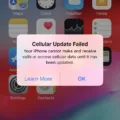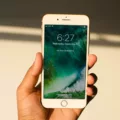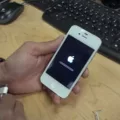If you find yourself locked out of your iPhone 7 Plus, don’t panic. There are several methods you can try to regain access to your device. In this article, we will explore different solutions to unlock your iPhone 7 Plus and get back to using it normally.
One of the most common reasons for being locked out of your iPhone is forgetting the passcode. If you enter the wrong passcode multiple times, your device will become disabled. When this happens, you will need to connect your iPhone to a computer with iTunes installed.
To begin the unlocking process, connect your iPhone 7 Plus to your computer using the Lightning cable. Open iTunes and wait for it to recognize your device. Once your iPhone appears in iTunes, click on it to access the Summary page.
Next, you will need to enter Recovery Mode. The steps to enter Recovery Mode may vary slightly depending on your iPhone model. For the iPhone 7 Plus, press and hold the Power button and the Volume Down button simultaneously. Keep holding both buttons until you see the iTunes logo and a USB cable icon on your iPhone’s screen.
Once you’re in Recovery Mode, iTunes will prompt you to either Update or Restore your iPhone. If you have a backup of your data, you can choose the Update option to preserve your data while updating the iOS. However, if you don’t have a backup or if you want to start fresh, choose the Restore option.
Restoring your iPhone will erase all data and settings on your device, including the lock screen passcode. It will also install the latest version of iOS. Make sure you have a recent backup of your data before proceeding with the restore process.
After selecting the Restore option, iTunes will download the necessary software and begin restoring your iPhone. This process may take some time, so be patient and keep your iPhone connected to your computer until it’s complete.
Once the restore process is finished, you will be prompted to set up your iPhone. Follow the on-screen instructions to choose your language, region, and other settings. If you have a backup, you can choose to restore it during the setup process.
Congratulations! You have successfully unlocked your iPhone 7 Plus and can now use it without any passcode or lock screen restrictions. Remember to set a new passcode to ensure the security of your device.
In addition to using iTunes, you can also unlock your iPhone 7 Plus using the Find My app. This method requires you to have enabled Find My iPhone on your device and have access to another Apple device or computer with the Find My app installed.
To unlock your iPhone using the Find My app, open the app on your other Apple device or computer and sign in with your Apple ID and password. Locate your locked iPhone in the app and select it.
From the options available, choose the Erase iPhone option. This will erase all data on your device, including the lock screen passcode. Once the erase process is complete, you can set up your iPhone as a new device or restore from a backup.
It’s important to note that using the Find My app to erase your iPhone will permanently delete all data on the device. Make sure you have a backup of your data before proceeding with this method.
If you find yourself locked out of your iPhone 7 Plus, there are several methods you can try to regain access. Connecting your iPhone to iTunes and restoring it is a reliable solution, but it will erase all data on your device. Using the Find My app is another option, but it will also erase all data. Choose the method that best suits your needs and remember to back up your data regularly to avoid losing important information.
Can An iPhone 7 Be Unlocked Without a Passcode?
It is possible to unlock an iPhone 7 without a passcode. There are a few methods you can try:
1. Use Find My app: If you have enabled Find My iPhone feature on your device and have access to another iOS device or a computer, you can use the Find My app to erase your iPhone 7 remotely. This will remove the lock screen settings, including the passcode. Here’s how to do it:
– Open the Find My app on another iOS device or go to iCloud.com on a computer.
– Sign in with your Apple ID and password.
– Select your iPhone 7 from the list of devices.
– Click on “Erase iPhone” to wipe all the data on your device, including the passcode.
– Once the erase process is complete, you can set up your iPhone 7 as a new device.
2. Use iTunes: If you have previously synced your iPhone 7 with iTunes on a computer, you can use the iTunes method to unlock the device. Here’s how:
– Connect your iPhone 7 to the computer you previously synced with.
– Launch iTunes and wait for it to recognize your device.
– Once your device is detected, click on the iPhone icon in the top left corner of iTunes.
– In the Summary tab, click on “Restore iPhone” and confirm your choice.
– iTunes will erase all the data on your iPhone 7 and install the latest iOS version.
– After the restore process is complete, you can set up your iPhone 7 as a new device.
3. Contact Apple Support: If the above methods don’t work, you can contact Apple Support for further assistance. They may require proof of ownership before helping you unlock your iPhone 7 without a passcode.
Please note that unlocking an iPhone without a passcode will erase all the data on the device. Therefore, it’s important to have a recent backup of your data to restore it after unlocking the device.

How Do You Reset a Disabled iPhone?
To reset a disabled iPhone, you can follow these steps:
1. Connect to iTunes: Use a Lightning cable to connect your iPhone to a computer with iTunes installed. Make sure the latest version of iTunes is running.
2. Enter Recovery Mode: To enter recovery mode, you need to force restart your iPhone. The process varies depending on the iPhone model:
– For iPhone 8 or later: Press and quickly release the volume up button, then press and quickly release the volume down button. press and hold the side button until the recovery mode screen appears.
– For iPhone 7 and iPhone 7 Plus: Press and hold both the volume down button and the side button until the recovery mode screen appears.
– For iPhone 6s or earlier, as well as iPad or iPod touch: Press and hold both the home button and the top or side button until the recovery mode screen appears.
3. Restore your iPhone: In iTunes, you should see a prompt saying that your iPhone is in recovery mode and needs to be restored. Click on the “Restore” option to begin the process. This will erase all data on your iPhone, so make sure you have a backup if necessary.
4. Set up your iPhone: After the restore process completes, you will be prompted to set up your iPhone as new or restore from a backup. Choose the desired option based on your preference. If you have a backup, you can restore your data, apps, and settings.
By following these steps, you can reset a disabled iPhone and regain access to your device. Remember to back up your data regularly to avoid losing important information in case of any future issues.
Conclusion
If you find yourself locked out of your iPhone 7 Plus, there are several options available to regain access to your device. One of the most common methods is to connect your iPhone to a computer with iTunes installed and enter Recovery Mode. From there, you can restore your iPhone and set it up as a new device, effectively removing the lock screen settings and allowing you to use your iPhone again.
Alternatively, you can use the Find My app to erase your iPhone remotely. This can be done by logging into your iCloud account and selecting the option to erase the device. This method is useful if you don’t have access to a computer or if you prefer a wireless solution.
It’s important to note that both of these methods will erase all data on your iPhone, so it’s crucial to have a backup of your data beforehand. Additionally, if you have enabled two-factor authentication or a passcode, you may need to provide the necessary information during the unlocking process.
Getting locked out of your iPhone 7 Plus can be frustrating, but with the right steps and precautions, you can regain access to your device and continue using it as normal.













